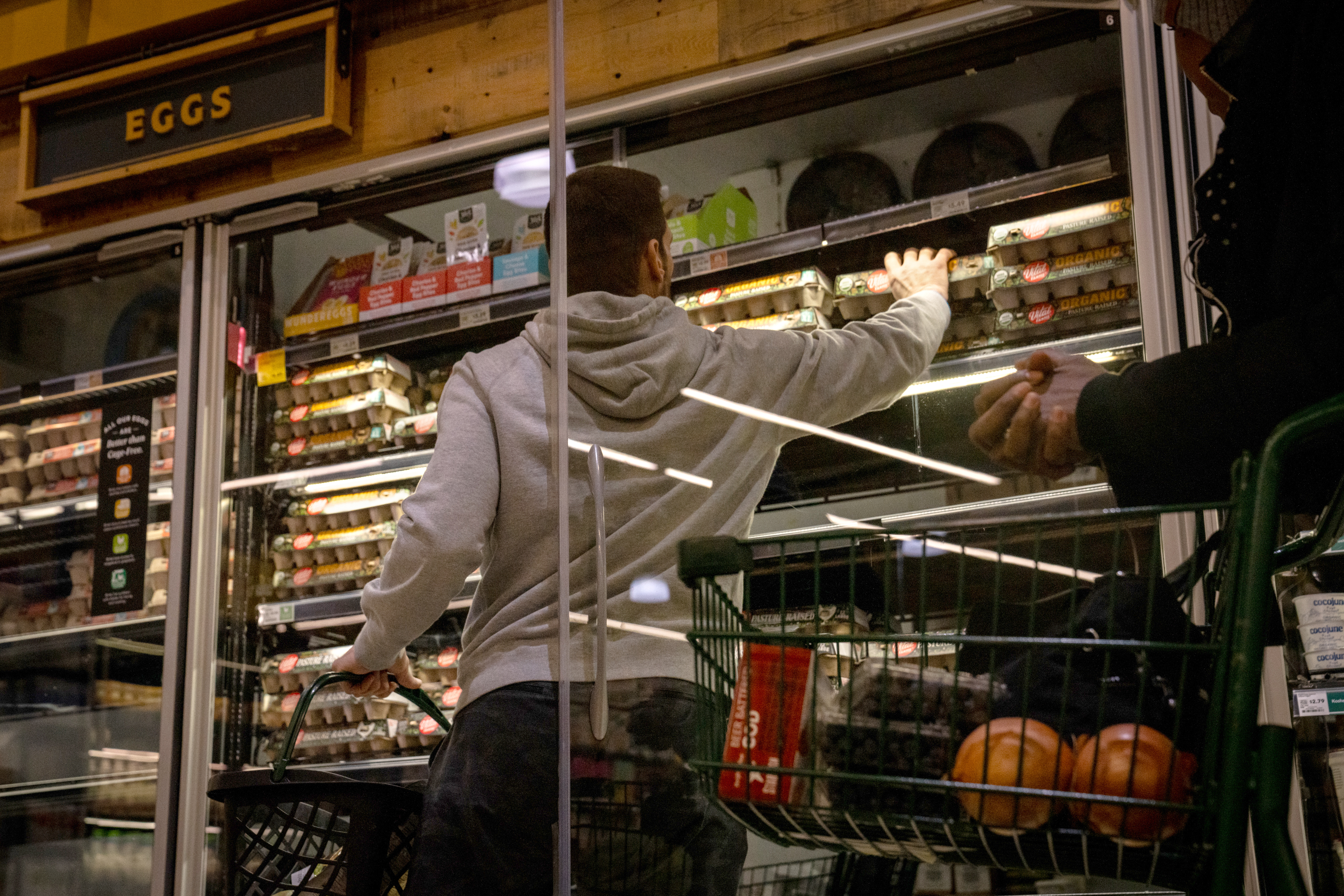As food prices continue to soar, Americans are feeling the pinch at the grocery store and the diner. From egg surcharges to tariffs, the nation’s food economy faces unprecedented challenges.
Editorial: The price of eggs? Just one sore spot in a food economy that has Americans on edge

Key Takeaways:
- Food prices have soared about 30% over the past five years, impacting consumers nationwide.
- External factors like bird flu, global conflicts, and climate change are disrupting supply chains and increasing costs.
- President Trump’s trade tariffs on Mexico and Canada are exacerbating inflation by threatening higher prices on everyday items.
- Businesses are facing challenges with rising costs and are passing them onto consumers, sometimes through practices like shrinkflation.
- Consumer confidence is declining due to rising prices and economic threats, signaling broader economic concerns.
Feeling the Pinch at the Table
It’s getting painfully expensive to eat. Among the necessities of life, food—sustenance—is close to the top. Americans are increasingly on edge as they grapple with soaring food prices that are stretching household budgets thin.
Eggs: The Canary in the Coal Mine
In a visible sign of the times, Waffle House, the restaurant chain ubiquitous in the Southeast, has imposed a 50-cent surcharge on all eggs used in its meals. Many other diner-style restaurants around the country have followed suit, including those in Chicago. The egg shortage, caused mainly by a virus decimating the hen population, is a stark example of how external factors can disrupt everyday commodities.
Global Conflicts and Supply Chain Woes
The causes of stubbornly high food costs are varied, many of which have little or nothing to do with domestic politics. Conflicts far from U.S. shores are having ripple effects on prices. Ukraine, for example, is the world’s leading grower of sunflowers. Before the war with Russia, many of those seeds were pressed into oil in Russian factories and processed into ingredients used in products like candy sprinkles. When Russia’s attack on Ukraine disrupted the market for sunflower oil, it led to upward price pressure on products few would have thought vulnerable to geopolitics.
Similarly, chocolate prices have soared due to problems in West Africa. Cocoa beans grow in a narrow region around the equator that has suffered from drought and crop disease as the climate has warmed, cutting deeply into production. Illinois-based Arway Confections & Long Grove Confectionery Co. announced higher wholesale prices this fall, blaming not only cocoa but also “the continued inflation on other raw materials, overheads, and labor.”
Trade Tensions Fueling Inflation
President Donald Trump took office promising “on day one” to reduce grocery prices that were a significant factor in voters’ unhappiness with the previous administration. However, economic principles such as supply and demand and market competition—along with unforeseen events like a bird flu—have proven stronger than any immediate force the administration has been able to exert.
In some ways, the situation has worsened in these early days of Trump’s second term. Consumers braced in recent weeks for sharply higher prices on avocados and cherry tomatoes when Trump announced 25% tariffs on Mexico and Canada. He paused the tariffs for 30 days after the two nations made concessions on border security that may or may not have been meaningful. But the threat of tariffs on two close allies, which happen to be the U.S.’s biggest trading partners, persists.
Agron Kosova of Fine Italian Food in Bolingbrook, Illinois, expressed his concern: “If you have a tax on Italy and Spain but not Turkey, it’s not fair. It’s not right. But until it’s done, and you know the numbers, it’s guessing.”
Struggling Businesses and Consumer Impact
Robert Day, President of Xcell International in Lemont, Illinois, which sells containers of sprinkles, spices, and other kitchen goods, has noticed upward pressure on prices everywhere he looks. “We fight so hard to keep our prices down,” said Day, holding a jar of orange sugar crystals. “I try to be a positive person, but are we headed for the biggest inflation ever?”
Some companies may bear their share of responsibility for the run-up in inflation. While many businesses say they have tried to hold down prices, evidence suggests that profit margins for food and beverage retailers have shot up in recent years, outpacing costs. Some manufacturers have reduced the size of products while charging the same or higher prices, a phenomenon known as “shrinkflation.”
The Ripple Effect on Sentiment and Industry
Consumer sentiment measured by University of Michigan researchers fell this month to its lowest level since July, with consumers expecting sharply higher inflation over the coming year. More than one consumer interviewed by The Wall Street Journal attributed their fears to Trump and the threat of tariffs.
The ripple effects extend beyond household budgets to the beleaguered restaurant and hospitality industries. The egg shortage and rising costs are not just numbers on a chart—they affect the day-to-day operations of businesses and the lives of workers and consumers alike.
A Call for Sensible Policy
Despite Trump’s promises to roll back price increases that have already occurred, a president’s powers are relatively limited when it comes to market forces, as many predecessors have found to their chagrin. But what can—and should—be expected is not to make these problems worse. Continued economic threats against friendly nations that play a vital role in keeping food on American tables at a reasonable cost are likely to do exactly that.











